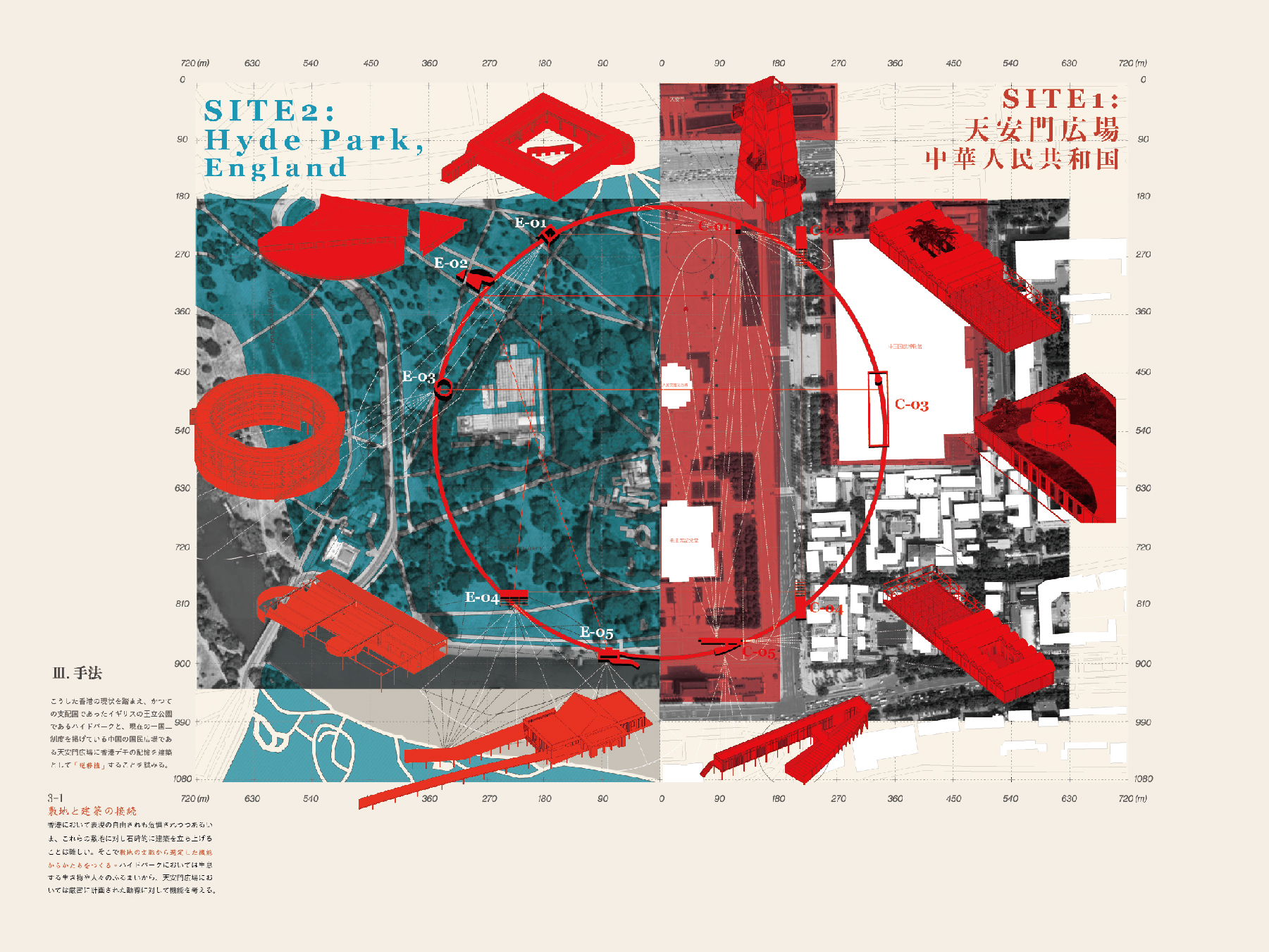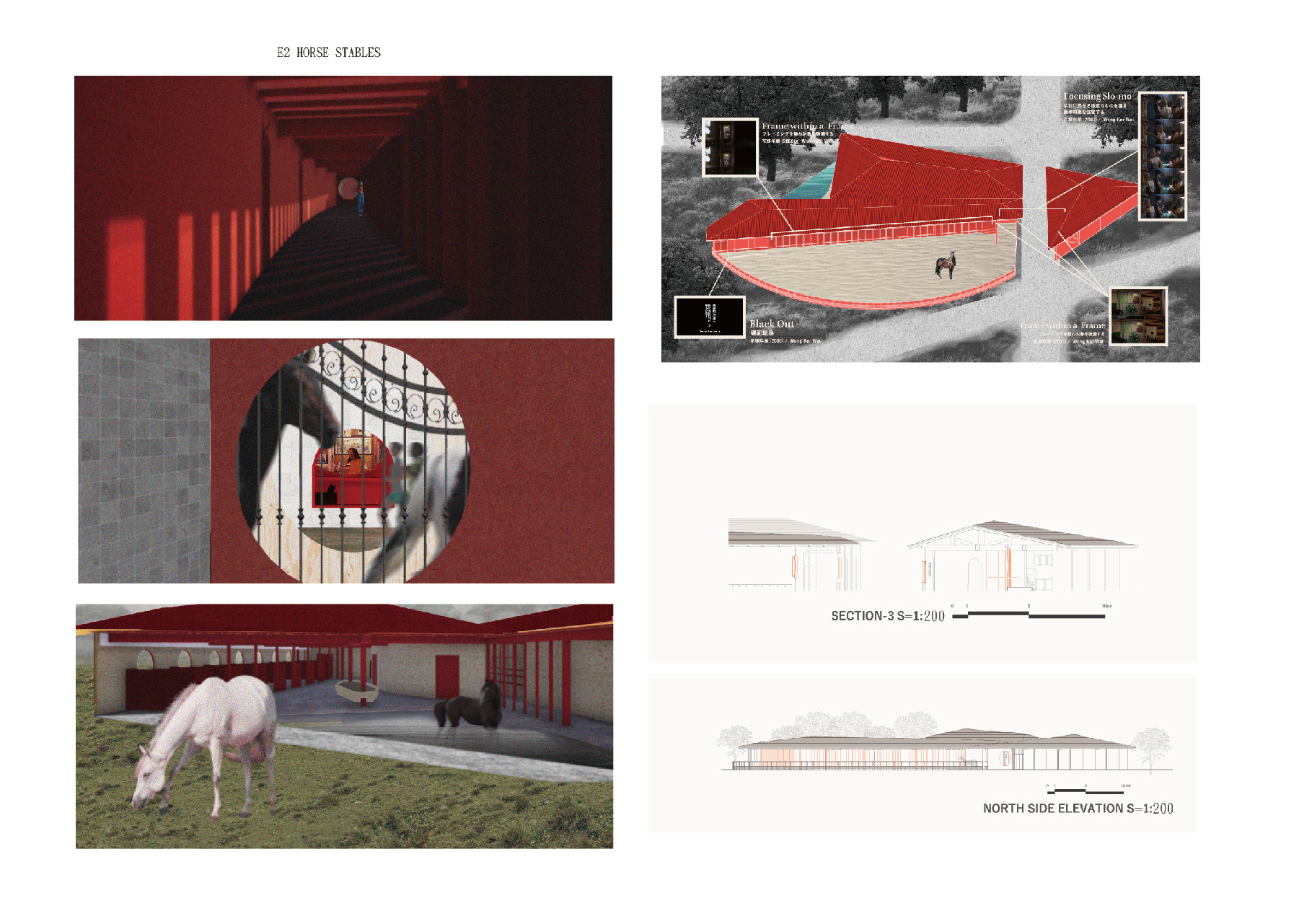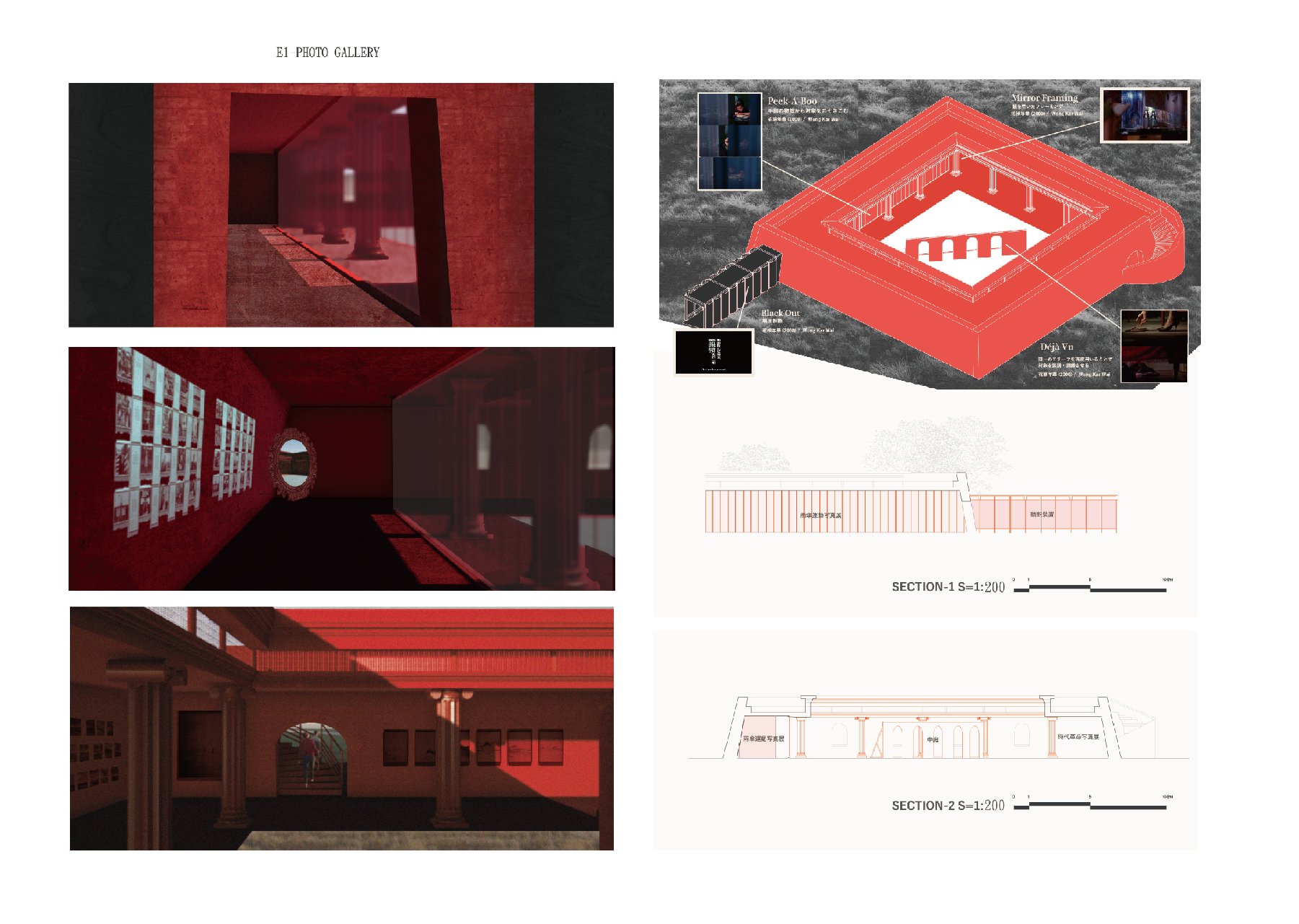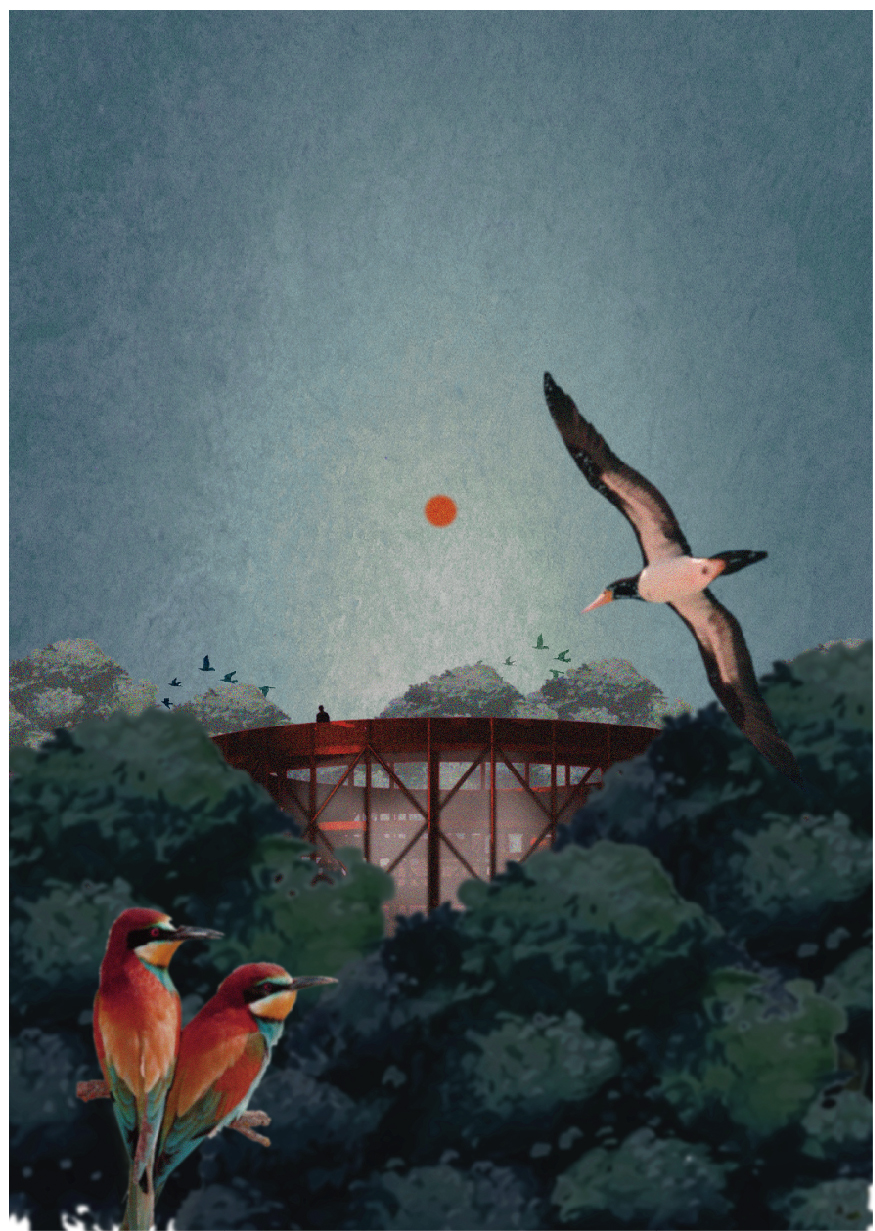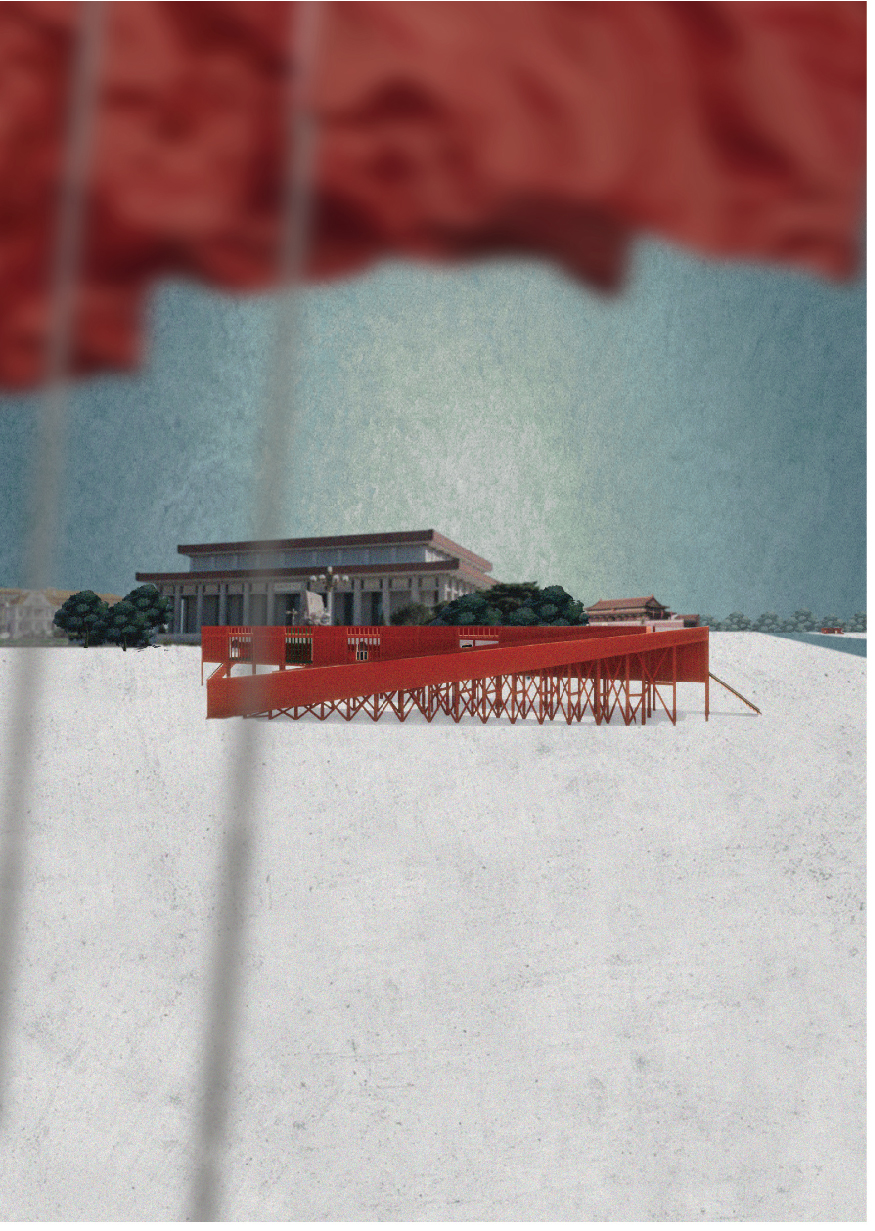我們如何把我們沒看過、沒經歷過的事情繼續傳遞下去呢?真正經歷過戰爭與其他不可遺忘的事實的人越來越少,我們這一代的人只能依靠想像。而且即使是同時代的問題,要是跨越國境,我們會將它當作是別人的問題而視而不見也是一個事實。
去年在香港實施的國家安全法是一個巨大的開端,使抗議團體決定解散,圍繞著香港的情勢已經很快地發生變化。致散落在世界各地的香港人,我想要著手10個建築獻給造就香港的英國與中國兩國。逆移植的意思是,將代表香港重要運動的建築送回每個國家,這些建築既有英國特色也有中國特色,並通過它們將兩國重新聯繫起來。10個線對稱關係的建築群,透過讓我們感受彼此的缺席,而成為合二為一的存在。最後,至今為止在香港發生的運動脈絡化產生的機能與形式中,以香港人身分為主題的電影導演王家衛的作品的手法被我運用,並加入戲劇性的演出。融入我們日常的「香港」在意想不到的瞬間出現了。在造就了香港的人們、從香港逃出去的人們、對香港一無所知的次世代的人的記憶中,「香港」再次出現了。
私たちは 「知らないこと」 をどのようにして語り継げるのだろうか?戦争をはじめとした忘れてはならない事実について、 実際の体験者は減っていくばかりであり、我々世代は想像を膨らませるのみである。さらに同時代の問題であっても、国 境を越えたとたん他人事であると目を背けているのも事実である。
昨年香港で国家安全法が施行されたことを大きなきっかけに、先日デモ団体も解散を決め、香港を取り巻く状況は一気 に変化を遂げた。世界中に散り散りになりつつある香港の人々へ、香港をつくりあげたものたち―イギリスと中国の二国 に10の建築をたちあげる。逆移植とは、イギリス、中国の両方の要素を併せ持つ香港を表す建築を各国に送り返すこと で香港を介してつながる二国を再び建築でつなぎ止める。線対称の関係にある10の建築群は、互いの不在を感じさせる ことによりふたつで一つの存在となる。これまで香港で起こった運動を、文脈から立ち上がった機能・かたちの中に、香港 アイデンティティを自身のテーマとしてきた映画監督・王家衛による作品より手法を転用し、劇的な演出を加え挿入する。 日常に溶け込んだ「香港」は、ふとした瞬間に現れる。香港をつくりだした人々、香港から逃げ出した人々、香港を「知らな い」次の世代の記憶の中に、再び「香港」は現れる。
How can we pass on what we have not seen, what we have not experienced? The number of people who have actually experienced wars and other events that should not be forgotten is decreasing, and our generations can only imagine. It is also a fact that we turn our eyes off of the issues of the same era as if they were someone else’s problem once it happened in a different country.
The implementation of the National Security Law in Hong Kong last year was a major trigger for the recent dissolution of the protest groups, and the situation surrounding Hong Kong has quickly changed. To the people of Hong Kong, who are now scattered all over the world, I would like to present ten architectures of the two countries that made Hong Kong – Britain and China. ‘Reverse-transplantation’ means to send back to each country the architecture that represents Hong Kong’s important movements, which has both British and Chinese characteristics, and to reconnect the two countries through them. The ten linearly symmetrical buildings become one entity by making us feel the absence of each other. In the function and form that emerge from the context of the movements that have taken place in Hong Kong up to now, techniques from the works of Wong Kar Was, a film director who has taken Hong Kong’s identity as his own theme, are appropriated and inserted with dramatic effect. The “Hong Kong” that has become a part of our daily lives appears at a moment’s notice. It reappears in the memories of the people who created Hong Kong, the people who fled Hong Kong, and the next generation who “don’t know” Hong Kong.
